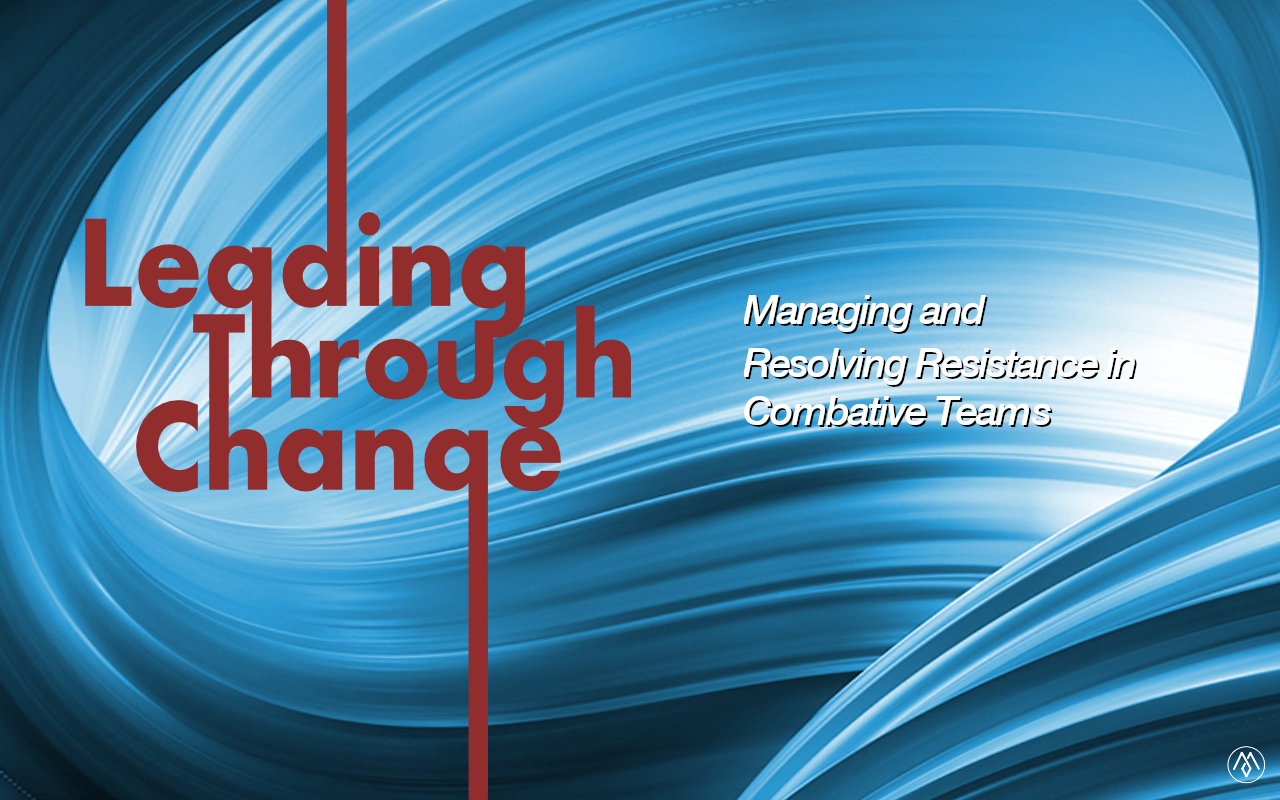Leading Through Change: Managing and Resolving Resistance in Combative Team

Recently, during a conversation with a fellow engineering leader that is facing conflict between two merged teams after a merger with a competitor. Two formerly competing teams had to work together. Predictably, tensions were high, team members exhibited increased frustration and resistance to changes.
Let’s be real, leading a team that’s resistant to change or outright combative is one of the toughest challenges we face as engineering leaders. Whether it’s skepticism about a new process, personality clashes, or just plain frustration, resistance often signals deeper issues. Fear, uncertainty, past experiences, or even misalignment with organizational goals can all be driving factors. So, how do we turn things around to create a thriving team?
This isn’t about forcing compliance, even though this may have crossed your mind for 1000th of a second. It’s about building trust, aligning team priorities, and fostering an environment where collaboration thrives. Let’s break it down.
Before we jump into solutioning, we need to diagnose the problem. The best thing we can do is create spaces where team members feel heard. Whether it’s one-on-ones meetings, roundtables, or just informal check-ins, we need to actively listen to their concerns and frustrations. This alone can defuse tension.
Resistance isn’t random!
It usually stems from uncertainty about roles or outcomes, bad experiences with leadership, or misalignment with company direction.
Sometimes, resistance isn’t about the change itself, but more about how people interact. Are there dominant voices shutting others down On your team? Unspoken rivalries? Identifying these dynamics helps you intervene effectively.
Trust is the glue that holds every group together!
Without it, even the best strategies fall apart in a ball of fire.
If your team doesn’t know why a change is happening, nine times out of ten they’ll assume the worst. As a leader need to overcommunicate, explain the reasons behind decisions, clarify the expected outcomes, and invite feedback. When people feel involved, they’re more likely to support the process and its changes. Change often triggers a fear of instability. Address those fears head-on. Reaffirm the team’s value, involve them in shaping the transition, and make it clear that they have a role in the future. If we want our teams to be open, collaborative, and resilient, we have to lead by example. That means admitting mistakes, acknowledging uncertainties, and celebrating progress in any measure…big or small wins.
What about when resistance escalates into outright combativeness? Conflict isn’t necessarily bad, it just needs to be redirected constructively. When egos clash, remind everyone of the bigger picture. Ask, “How can we combine our strengths to make this successful?” Redirecting attention to shared objectives helps cut through personal tensions.
Unspoken expectations breed friction!
Establish a clear accountability to ensure alignment and responsibility.
Set clear agreements on how the team operates, accepted communication styles, decision-making processes, conflict resolution. When there’s clarity, there’s less room for unnecessary pushback. Instead of shutting down disagreements, use them as learning moments. Ask: “What’s valuable about this perspective?” or “How can we refine this idea together?” Shifting the tone from adversarial to constructive makes a huge difference. Cross-functional conflicts often come from a lack of understanding. If engineers and product managers are butting heads, have them walk through each other’s challenges and goals. A little perspective can go a long way in breaking down resistance.
At the end of the day, resistance fades when collaboration fills the space. It’s easy for team members to focus on their individual contributions, but the real magic happens when we celebrate team achievements. Recognizing shared success reinforces the idea that collaboration is the real path to impacting a teams resistance to change. Creating a culture where people feel safe admitting struggles helps dismantle resistance.
Simple check-ins such as asking team members, “What’s something you’re working through right now?”, can break down walls and build trust.
Leading through resistance isn’t about forcing change. It’s about fostering trust, creating alignment, and ensuring open communication. When you approach resistance with empathy and strategy, we don’t just overcome it, we can transform it into resilience. Every team has untapped potential. As leaders, our job is to unlock it. Here is a framework for Managing and resolving resistant and combative teams.
-
Understand the Root Causes of Resistance
- Actively listen to team members through one-on-one or group discussions.
- Evaluate factors contributing to the resistance, such as fear, personl conflicts, past experiences, and goal misalignment.
-
Build Trust
- Communicate, communicate, communicate transparently about changes and expected outcomes.
- Reassure team members about their value and stability during transitions.
-
Resolve Combativeness Effectively
- Shift focus from personal conflicts to shared team goals.
- Establish teamwide agreements on communication and conflict resolution.
- Facilitate cross functional communicattion to build understanding between different roles.
- Celebrate collective wins to emphasize teamwork over individual achievements.
- Encourage open discussions about challenges.